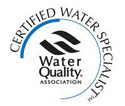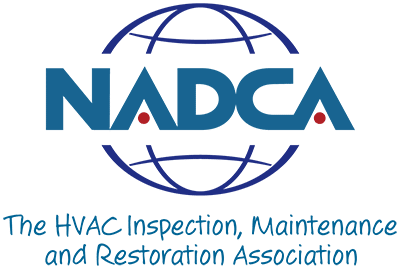Frequently Asked Questions
If you have questions related to your HVAC, Electrical or Plumbing system that are not listed below, please give us a call at 941-306-3715.
HVAC Questions & Answers
Once a month is a pretty good rule of thumb for most people. Depending on where you live and how much dirt, pet dander, and other contaminants are present, the answer could be more or less. Check your filter frequently to determine if it’s dirty. If it is, change it.
There’s no easy answer for this one. A lot of factors will go into what size heating and cooling unit you’ll need. The type of house you own, its walls, insulation, attic space, and more can go into determining what size unit is required. A system that is too large could result in a home that’s too humid, causing problems with moisture and mold. A system that is too small will run constantly, running up your energy bill. Only a qualified heating and cooling technician can determine what size unit is best for your home.
In most cases, the answer is yes. There are a variety of reasons why you should replace both the outdoor and indoor units simultaneously. For starters, air conditioner and heat pump outdoor units are manufactured to work with a matched indoor unit. When you mix and match units, it can result in reduced efficiency and performance.
Also, if you bought your indoor and outdoor units at the same time, your indoor unit will probably be approaching the end of its useful life at about the same time as the outdoor unit. By not replacing the indoor unit too, all you’re doing is delaying the inevitable and likely paying higher energy bills at the same time.
By purchasing indoor and outdoor units simultaneously, you’ll get a warranty covering the whole system, meaning that you won’t have to cover the full cost of any needed repairs to your unit during the warranty period.
While covering your unit can prevent unwanted debris from accumulating on the unit, it can also cause problems if you try to operate it with the covering in place. If you’re going on a long trip and plan to turn the unit off while you’re gone, feel free to cover it up. Just make sure you disconnect the power source before leaving.
There are a lot of reasons why your air conditioning system might freeze up, and all of them require help from a professional technician to resolve, as only they have the training and correct tools to fix the problem.
Ironically, low refrigerant can cause your system to freeze up. Over time, wear and tear to your system can result in leaks that cause the system to lose refrigerant. When your unit loses refrigerant, it causes the system to freeze up because of low pressure inside the system.
When freon levels are low, the refrigerant still is forced to expand to the same amount. The more that expansion occurs, the cooler the temperature is produced. The colder temperature will cause moisture in the air around your unit’s evaporator coil to freeze, eventually icing up the coil and impeding its function.
Dirty evaporator coils can cause units to lose airflow and, eventually, cause the system to freeze up. Defective blower motors can also cause freezing.
Heating and cooling units need to have scheduled check-ups to make sure everything is operating properly. HVAC experts recommend an annual inspection and service call by your heating and cooling company. Technicians should inspect your system, lubricate components, and repair or replace any malfunctioning components.
Popping noises are usually indicative of ducts that are too small to manage the airflow your system is generating. Qualified air conditioner repair specialists can evaluate your ductwork and make necessary adjustments.
Zoning Systems separate your air conditioning system’s ductwork into different segments, allowing you to exercise temperature control in each segment, thus allowing for more targeted and efficient air conditioning.
For example, you may have a room with many windows that gets hot, and which may need more air to cool down, while you may also have a rarely occupied guest room on the other end of the house. With a zoned air conditioning system, you can direct more cold air to the many-windowed room and less air to the unoccupied room. This allows for more efficient use of your AC system and more comfortable home.
Indoor air quality is a major concern, as many studies show that air pollution is much worse indoors than outdoors. You can improve your indoor air quality with frequent dusting and vacuuming, and you can also have a qualified technician install devices such as UV light units, special air filters, and electronic air cleaners to improve indoor air quality. Poor indoor air quality has been linked to many illnesses, so improving your home’s air quality is an investment worth making.
Heating and cooling units are a big investment, so it’s understandable that you’d want them to last as long as possible. Reducing usage is always helpful, so turn the thermostat up or down, as needed, to reduce use when you’re not at home. Changing air filters will prevent clogs. Regular check-ups can also help you ward off any potential trouble spots.
These are just a few of the questions air conditioning and heating specialists answer every day. When you have questions about your heating and cooling system, it pays to get help from experienced professionals.
Electrical Questions & Answers
A fuse and a circuit breaker both perform the same function of disrupting the flow of electricity when a fault is sensed. The only difference is that a fuse will have to be replaced once it has tripped, whereas a circuit breaker won’t need replacement. Due to this, circuit breakers are more common.
A “short” and “short circuit” describe the same problem. When a short circuit occurs, the electoral wire comes into contact with the neutral or grounded conductor wire and excessive heat is generated. If you see sparks in your electrical panel, this may indicate a short circuit. If this occurs, you should call an electrician immediately for assistance.
A GFCI outlet is designed to protect you from electrical shock when moisture is present. GFCIs should be installed in wet locations including unfinished basements, garages, and within six feet of any sinks, kitchens, or bathrooms. You can identify a GFCI outlet by the two buttons on the face of the outlet. One button reads “test” and the other reads “reset.” The “test” button will cause the GFCI outlet to trip, or turn off, and the “reset” button will reset, or turn the power back on. If the outlet will not reset when the “reset” button has been pressed, then a problem may exist, and you will need the help of an electrician.
There are several reasons this could be occurring. However, one particular reason that can be extremely dangerous is overheating. Having to replace bulbs over and over again is not only a massive inconvenience, but it is also a fire hazard. We recommend having your light fixtures inspected by an electrician if you notice that bulbs are constantly blowing out.
Before you worry, try a simple test. Find a small lamp and plug it into the outlet in question. Then, flip on all of the wall switches in the room. The lamp may turn on when you flip a switch because some outlets are controlled by a wall switch. If you cannot find a switch that operates the outlet, check around the room and see if other outlets or lights are out. Next, check the electrical panel to see if any circuits are tripped. If they are, reset the circuit breaker. If you try all of the wall switches and the circuit breaker, and find that the outlet still does not work, be sure to call an electrician to evaluate the problem. There may be a short somewhere in the system.
In many cases, lights flicker because of an outdated electrical system. If this is the case, your electrical panel or wiring will need to be replaced. In other cases, it can be a loose wire, insufficient power supply, or another appliance on a circuit drawing too much power. Regardless, it is best to have the problem inspected by a licensed electrician.
If you have reset circuits, only to have the breaker trip again, it is likely that you have a more serious problem that needs to be addressed by a qualified electrician. Our experience has shown that typically a power-hungry appliance is causing the trip in the circuit breaker. Usually, it is caused by a space heater during the winter, an air conditioning unit during the summer, or even something as small as a hairdryer. However, sometimes it is simply that the rating of a frequently used circuit needs to be increased. For example, if a 15-amp circuit keeps tripping, then you may need to have it changed to a 20-amp. Changing circuits should only be done by a professional, certified electrician.
Conventional circuit breakers only respond to overloads and short circuits. They do not protect against arcing conditions that produce erratic and often reduced currents. AFCI stands for Arc-Fault Circuit Interrupter. AFCIs are designed to protect against fires caused by arcing faults in electrical wiring. AFCIs are required in the United States for residential bedrooms.
If you go to turn off your light switch and find that it is hot to the touch, this is indicative of a serious issue that could lead to an electrical fire. Possible reasons for this include the switch being overloaded, the switch failing, or faulty wiring. In any case, you should address the problem immediately and call an electrician as soon as possible.
At Aqua Plumbing & Air, we advise against making your electrical repairs a do-it-yourself project. First and foremost, some electrical projects require a permit. Additionally, there is a large risk of being shocked or starting a fire when working with electrical wiring. Finally, attempting to do them yourself could cause more serious damages than you began with, as well as costly repairs. For your safety and for your wallet, we recommend calling an expert electrician to perform any home electrical projects.
Plumbing Questions & Answers
Usually, drains are clogged because people are not careful of what they put in them, especially in the kitchen. Other drains, like in the bathroom, get clogged because of the oil residue from soaps, shampoos, and hair.
This is one of the most common plumbing questions asked. The usual reason is that the flap in the bottom of the tank isn’t sealing shut. Take the top off the tank and flush the toilet while watching the rubber flap. Does it completely close? If not, even though water is entering the tank, some of it is flowing out through the unsealed flap, and therefore, the water continues to run because the float ball trigger is never activated to stop the flow since water never reaches the fill line. That’s why jiggling the handle works to stop the running. It’s attached to the rubber flap with a chain, and jiggling it will reposition the flap so that it may seal more securely.
Depending on the age and type of your water heater, there are a couple of reasons you don’t have enough hot water:
- Electric water heaters commonly have two heating elements, one on top and one on the bottom. Either of these elements can stop working. If the bottom element goes out, only the top portion of the water heater is being heated. If the top element goes out, there will not be any hot water.
- There is a reset button that could have been tripped causing the water heater to stop working. If that reset button has tripped, that is an indicator that something is wrong.
If your water heater is running out of hot water quicker than normal, give us a call and we will get you back in hot water fast!
Yes. In fact, the difference can be damaging to your home and your body. Maybe you have experienced damaged clothing from the laundry, excessive soap consumption, pipe scaling, faucet and fixture deterioration, skin problems, or undesirable tastes or odors from your water. If you have, then you have a water problem.
The first thing you should check is your toilets; make sure they are not leaking. Then you can check to ensure your fill valve inside the tank is not overflowing through the overflow pipe. There is a small tube that should be connected to it, you want to make sure the water level is about 1 inch below the overflow tube or level with the manufacturer’s mark inside the tank. The last thing you can check is your flapper. You can do this by adding a couple of drops of some food coloring to your tank water, letting it sit for about 15-20 minutes, and checking to see if the water in your bowl has changed color. If it has, then you will need to replace your flapper.
First, turn off your water supply at the main shut-off valve. As a homeowner, it’s important to know where this is located and educate your family member as well. Second, always contact a professional plumber during emergencies. And don’t touch any wet electrical fittings – call in an electrician to deal with that.
Drain cleaners are usually very toxic, and not a good thing to keep around the home, especially if you have children or pets. These toxic chemicals also have a negative effect on your pipes, causing deterioration from the inside out. When this happens, the drain lines will need to be replaced. There are various products on the market that contain “friendly” bacteria and enzymes. These work great for keeping drain sludge and grease from building up on the pipes.
Always run water when using your garbage disposal, since the moisture helps break up the food, even when disposing of fat and grease. Soft or brittle debris like eggshells, cooked carrots, peas, mashed potatoes, and small pieces of meat will be ground up by the disposal and flushed down the pipes, but hard materials like bones and coffee grounds will wear out the disposal and dull the blades. Fibrous materials like corn husks can jam up the disposal.
Assuming that the plumbing problem is not an emergency, it’s always smart to do as much research as possible before choosing a plumber. Check to make sure the plumber is licensed in your local area or state. Consult the Better Business Bureau to learn about complaints filed against the plumber or his company and whether the plumber has a good record of handling disputes. Ask the plumber for references and call those previous clients to get their opinion of the plumber’s work. Finally, ask for an estimate on the repair job that has caused you to look for a plumber in the first place.
The two most common causes for such noises are steam and sediment in the tank. You can often correct steam problems by merely lowering the thermostat setting. If you suspect a faulty thermostat, turn the setting down: if the heat source doesn’t go off, replace the thermostat. To get rid of problem-causing sediment in your water heater, open the drain valve at the bottom of the tank and drain off a little water until it runs clear. Draining the sediment should eliminate noise problems and allow your heater to operate more efficiently.
Whole House Water Filtration Questions & Answers
A whole home water purifier is required when there is a lot of sediment problem. It is installed on a home’s main water supply. It processes the complete water system which comes into the house and used for all purposes such as cooking, laundry, toilets, etc. Sediments are small particles of sand which can damage all the taps including drinking water. They also get deposited in the water heaters which can eventually harm them. Moreover, if there is a concern of some kind of odor in the water, complete water supply of the house should be filtered. Having a whole home water filtration system is a good option to prevent radioactive materials.
All the water filters have a tendency to restrict water flow. Hence, it is important to understand the pressure. The flow rate will depend on the use of the water. The drinking water taps can usually have a maximum flow rate of ½ gallons per minute. However, if we talk about the entire house, approximately, 15 gallons per minute can flow through more than one taps. The flow rate can be calculated based on your incoming pipe size and the volume of water supply.
If an inappropriate filter installed can restrict water supply and it can so happen that two taps cannot give water flow at the same time.
When we talk about groundwater, there are certain problems which pop-up. They are – odor, chlorine, sediment, unwanted minerals, and unwanted contaminants. A test of your tap water is required to understand the amount and variety of contaminants present in the water. This will give a clear picture of what type of filter you would need for the water supply. Some of these variants can be observed at home. If there are stains in the bathroom units, it means your water contains iron and minerals. Chlorine and a different kind of smell in the water can be easily noticed.
A home water filter should be able to remove the sediments and other contaminants. Some harmful minerals could also be a concern, with no leaving behind the odor and taste of the water.
A whole house water purifying system can range from $1000-$10,000. The installation charges would add up to this amount as this system needs to be installed with the main water supply of the house. Moreover, as the system filters water for the entire house, the cartridges would need periodic replacement.
YES. There is an activated carbon filter in the purification system. This helps to remove the contaminants which are responsible for odor and taste of the water. Carbon leaves the water clean and pure. They last twice as long as sediments filters, but you would need to replace them on a regular basis. They cannot be cleaned. However, keeping in mind that a sediment filter should be installed before a carbon filter will surely enhance the lifespan of the latter.
YES. There is a sediment filter in the system which removes the sediments from water. The whole house water purifying system also contains carbon filters with zinc and copper integrated into it. They keep away bacteria to grow inside the filter. Usually, chlorine does this work. But if you wish to remove maximum chlorine from the water, you will need this filter which would help your system stay away from bacteria growth.
The system indicates that the filters need replacement. When the flow rate reduces and the taste of water changes, keep a note. The flow rate is disturbed due to excess sediment deposits. Hence, it is time to change the sediment filter. And, when the carbon filter loses its efficacy, the taste and odor of the water changes. It’s time for you to change the carbon filter.
The water color may change when you replace the carbon filter. This is due to carbon dust being chased out from the new filter. Letting a few gallons of water flow away will solve this problem. It does not reoccur; only happens with new carbon filter cartridges.
A double canister water filter is a package of two filters, where one is used to remove sediment, and the other enhances the taste and odor of the water. One filter can perform both tasks. However, it is always recommended to use two separate filters here. Hence, double canister filters are used. These filters also increase the flow rate.
A high-end whole-house water purifier can do the work at its best. Select the one which suits best according to your water supply. It can remove contaminants and sediments at the point of entry into the house. The whole house water system can filter water for cooking, washing, drinking, and toilet purposes. This system can also remove sulfur from the water.

















